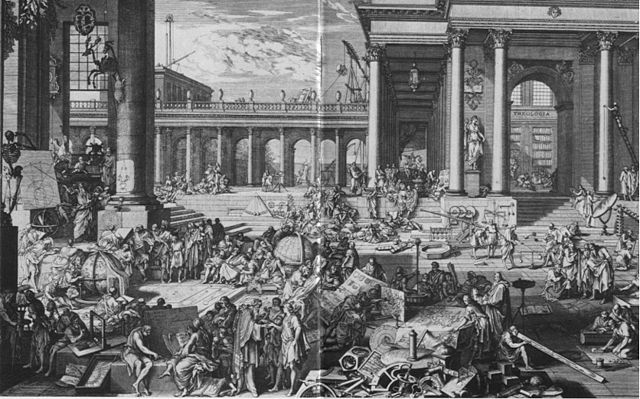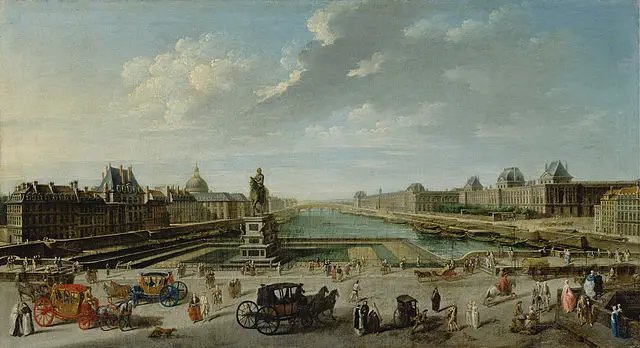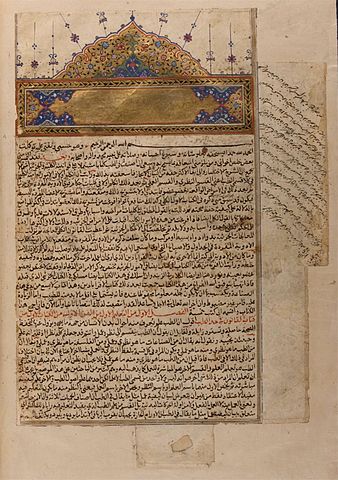
| Time Period | 16th-18th century |
| Notable People | Ada Lovelace, Isaac Newton, Immanuel Kant, John Locke, Voltaire |
| Further Reading | The 3 Impacts of the Printing Press on the Protestant Reformation and Al-Khwarizmi: His 3 World Changing Accomplishments |
The Scientific Revolution is often cited as starting in the late 16th century and progressing up until the early 19th. During this time period, the western world would see a drastic overhaul in how people perceived their world. Within the short span of 200 years, the entire world was changed with the advent of new technology, logic, science, and philosophy. However, in order for this to happen 3 things had to happen that set the Scientific Revolution into motion.
There are 3 major things that had to change to allow the scientific revolution to happen. First, the printing press had to gain widespread popularity to break the church’s monopoly over the epistemology of Europe. Second, the economy of Europe had to grow to the point that specialized scholars could exist. Third, ancient Greek-Arabic texts had to be translated and spread across Europe.
Without these 3 things happening the Scientific Revolution would have never happened. We are fortunate that Europe in the 16th century was in the perfect situation that would allow a massive explosion in research, inventions, and writing. Here at The History Ace, I strive to publish the best history articles on the internet. If at the end of this article you enjoyed it then consider subscribing to the free newsletter and sharing around the web; it really helps.
Without further ado, here are the 3 things that led to the Scientific Revolution.
The Printing Press Had To Gain Widespread Popularity To Break The Epistemological Hold Over Europe

From the 4th century AD up through the late 15th century AD, the European Church held the sole power to pass knowledge through society; the act of how knowledge transfers around is called Epistolomogy.
All books that were copied or translated had to be approved by the European Church of the middle ages. Over time this created a problem of censorship preventing new ideas from becoming published. If you lived during the middle ages and you were literate then the only knowledge you would receive was old dogmatic texts. Any outside thinking was highly criticized.
On top of this, the texts of the middle ages were written and copied into Latin. The Latin language was the written language of the European church. The effect of all the texts of the middle ages being written in Latin was that only those who could read Latin could read.
It was not until the creation and mass adoption of the printing press in the 15th century that books started being made into local languages. From 1436 up until 1499 books suddenly became available in German, English, French, and Italian.
The invention of the printing press is what allowed knowledge production to happen outside the church. Now people could become literate and read easily produced books in their local language. Historians have noticed that after the creation of the printing press literacy rates across Europe exploded over the coming centuries.
With knowledge production taken away from the Church suddenly new ideas could be shared. Almost overnight we had new ideas about physics, philosophy, mathematics, and science. This time period is what we call the Scientific Revolution and it would have been impossible without the creation of the printing press. The printing press broke the European church’s monopoly over knowledge production and sharing; or as we know it today as epistemology.
The Economy of Europe Had to Grow to the Point That Specialized Scholars Could Exist

After the Black Death ended around 1370 the economy and population of Europe rose dramatically. This population and economic growth allowed small populations of people to begin to specialize in many different fields, one of which was the emergence of specialized scholars such as professors of physics, history, science, and mathematics.
From 1399 up until the end of the 18th century, Europe would see a population increase. From 1400-1500 many parts of Europe would become centralized forming large cities. These cities would then become trading hubs that required large networks of villages to support the growing population.
This population growth would only increase exponentially during the 16th century. In large cities such as Paris, London, Prague, and Rome universities started developing to teach the elite of these societies new skills. A large demand was growing for university professors who could teach a variety of subjects.
Before the Scientific Revolution, it would have been impossible to support a population of academic scholars in large cities. This was because there was no demand for them outside of super niche religious areas such as Oxford. However, as the population of Europe rapidly grew a massive demand for specialized scholars began to grow.
These scholars would spend their time researching and working with other colleagues on new inventions/theories. People such as Issac Newton, Alexander Volta, and Thomas Newcomen came out of this vibrant academic world.
On top of this networks of information began to emerge in the form of academic conferences and journals. Here scholars could share their ideas and new theories with other like-minded people. Feeding off the ideas of their colleagues many scholars would go on to create some of the most important inventions of the Scientific Revolution.
This entire academic world would have been impossible 300 years earlier during the middle ages. There were no academic conferences, no colleagues, and no ability to have specialized scholars who would spend their entire lives learning about one thing. All of this happened because of the massive economic and population growth during the late Middle Ages.
Ancient Greek-Arabic Texts Had to Be Translated and Spread Around Europe

After the fall of the Western Roman Empire in the 5th century AD ancient knowledge started to get lost. This was because as Western Europe was picking up the pieces of the Roman Empire knowledge production was unfortunately one of the least important parts.
On top of this, the European Church made a conscious choice to only preserve the knowledge they thought was worthy of their time. Several texts of ancient Greek and Roman authors regarding astronomy, science, and medicine were thought lost forever.
However, the Roman Empire was far larger than just Europe. During its height, Rome extended from Britain to Syria, from Africa to Germany. All text was written in Latin and for a brief period of time knowledge production in the ancient world flourished. Latin texts of ancient Greek science would make their way to modern Afghanistan and Persia where Arabic scholars would translate them into their own language to study.
From the 5th century up until the 15th, these Arabic scholars would preserve and build upon the knowledge of the ancient Greeks. Mathematics, astronomy, medicine, history, and literature would be preserved in ancient libraries.
Around the 15th century, this knowledge would start to make its way back into Europe. Almost overnight there was an explosion of ideas that today we call the Renaissance. This was started by Humanists ‘discovering’ these ancient Arabic texts and starting to question the world around them.
Almost immediately the European Church began to push back against these ideas. European religious scribes such as Nicholas Copernicus would get ahold of these ancient Greek texts and start questioning their individual beliefs. Copernicus is known today for fragmenting the European Church’s belief that the Earth is the center of the Universe; Copernicus presented an ancient Greek model that put the Sun in the center and the Earth revolving around it. The European Church made it clear that Copernicus was wrong in his belief.
However, across Europe, these ancient Greek-Arabic texts started to spread. These translated copies started getting people to think in different ways. From this spread of knowledge of ancient texts the scientific way of thinking, or the scientific method, was developed. As such one of the main things that led to the scientific revolution was the translation and spread of Greek-Arabic knowledge.
Conclusion
There you have it; the 3 things that led to the Scientific Revolution.
Many people are not aware of just how important of an event the scientific revolution was. It would not have happened if these 3 things happened first. Without this perfect scenario forming, we might very well still be living in the middle ages. Today historians spend their entire life studying the history of science; any potential graduate students will find substantial amounts of funded research in this field. If you are interested send me an email.
I hope you enjoyed this article. Here at The History Ace, I strive to publish the best history articles on the internet. Feel free to subscribe to the free newsletter and share around the internet; every share helps so thank you.
Further, you can check out some of the other articles below.
-
How The American Revolution Changed The World

Here is how the American Revolution changed the world. Many people are not aware of just how important this event actually was.
-
Why The Roman People Loved Chariot Racing

Why did the Roman people love chariot racing? Well it all comes down to these 3 reasons.
-
The Design and Color of Roman Chariots

What was the design and color of Roman Chariots? Were they faster or slower then normal chariots? Well here is everything!